Short articles about my experience with the Google/Efabless/Skywater130 ASIC process, interviews and any other related topics I think are interesting.
Become a Silicon Wizard with Siliwiz
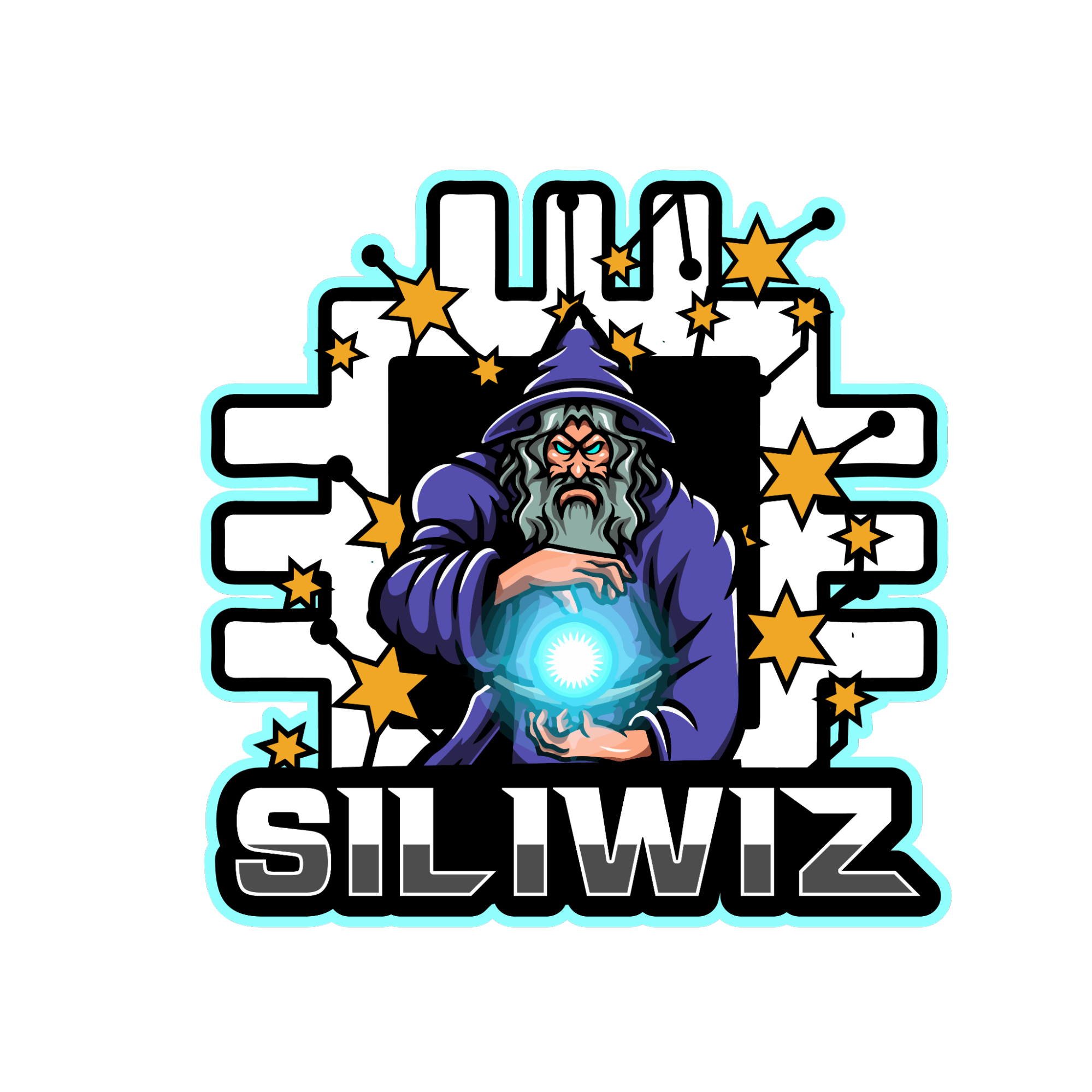
SiliWiz will help you get a basic understanding of how semiconductors work and are manufactured at a fundamental level. It’s a free and open source tool that you can play with in your browser.
Aims
- Draw your own logic gate and understand how that gate would be manufactured in a foundry.
- Learn how the gate is built out of the fundamental circuit elements used in chip design
- Understand how the drawings are used to manufacture the chip
- Be aware of some of SiliWiz’s limitations and simplifications
Lessons
We have a set of free lessons that guide you through from drawing and simulating resistors all the way up to a CMOS inverter.
Monthly Update - September 2022
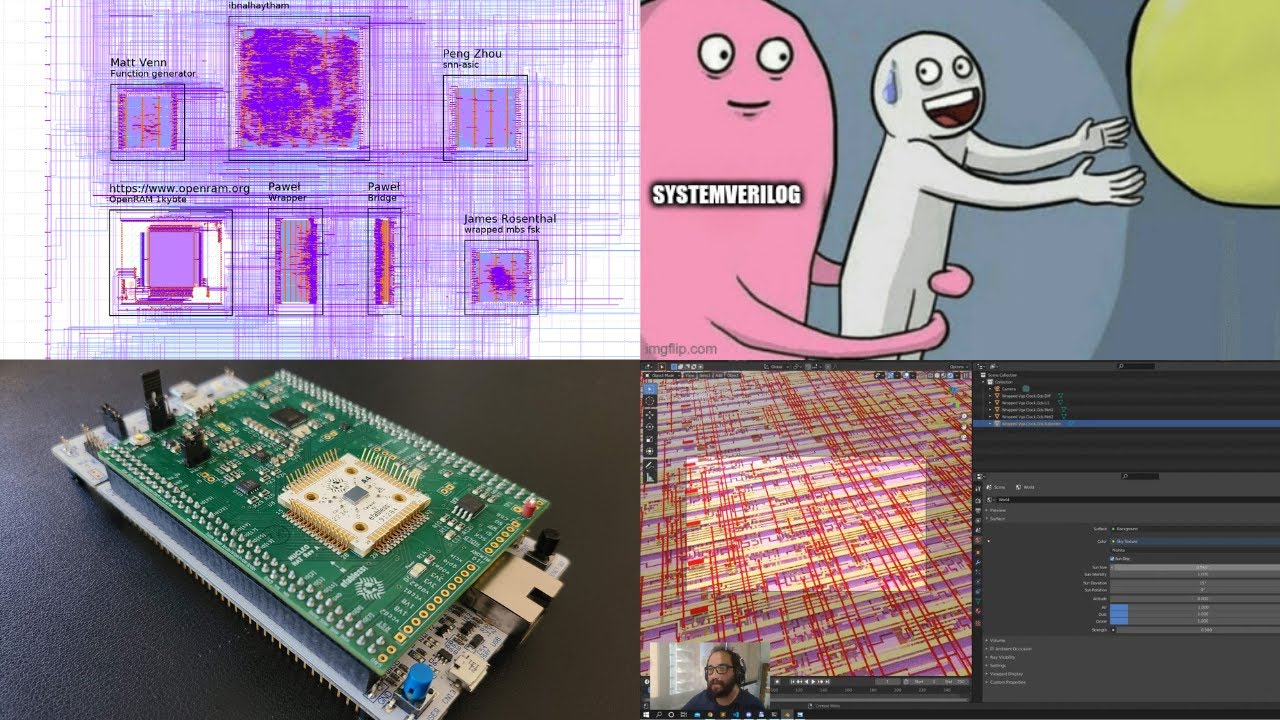
Welcome to the September 2022 monthly update!
Here are the main topics from last month:
- MPW7 submission,
- MPW2 updates,
- Job posting at E-Fabless,
- New videos,
- Is it the end for UVM? and
- Rendering GDS files with Blender or in your browser
MPW7
The deadline for MPW7 was the 14th of September and the Zero to ASIC course submitted another set of projects. Special shout out to Farhad, Peng and James who are all first time tape outs on the project. Well done everyone!
3D Rendering of GDS Files
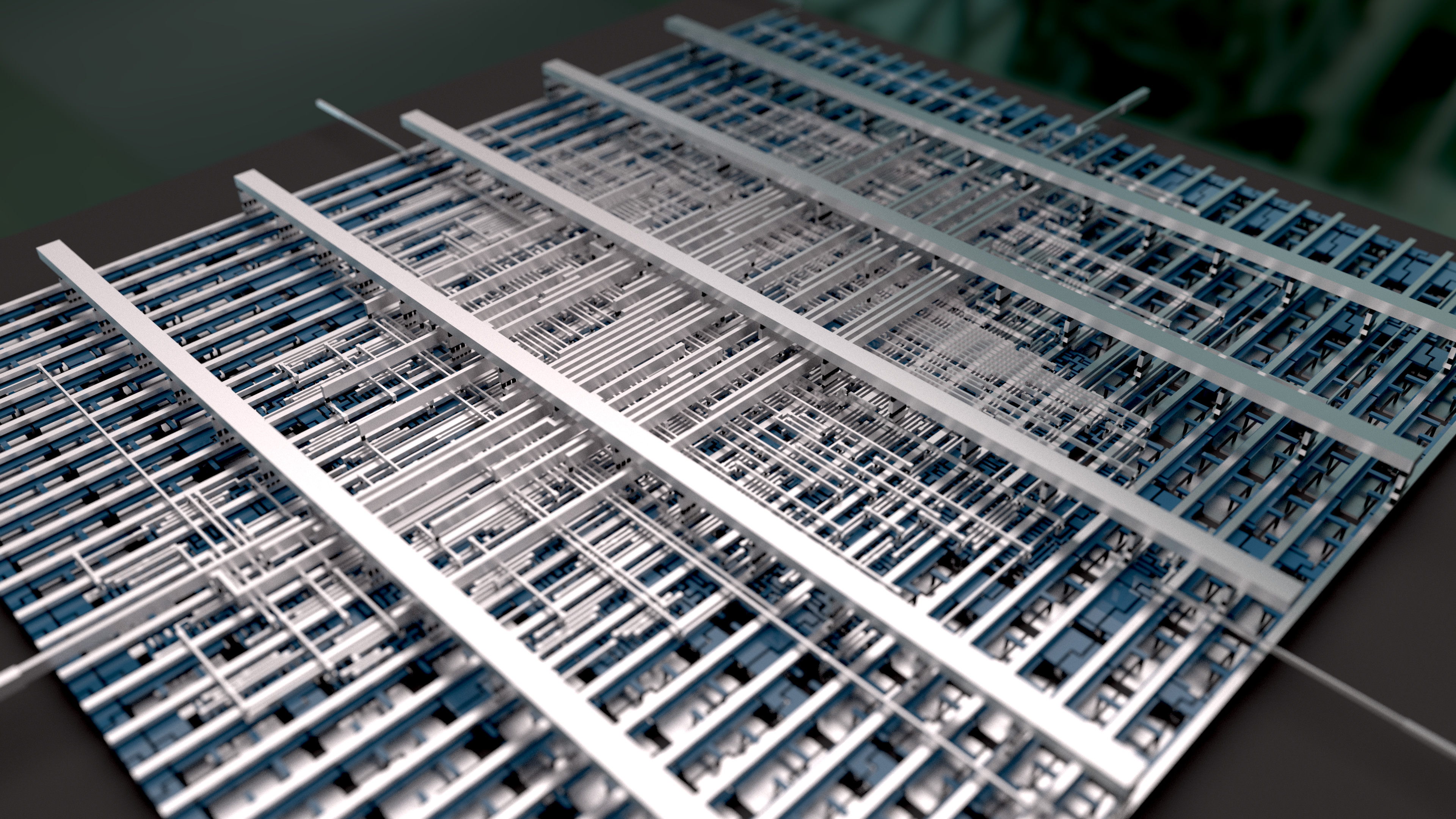
The 3D structures created within a silicon die are spectacular to see.
Thanks to Maximo (@maxiborga on Twitter), there’s now a video for 3D rendering ASIC designs enabling anyone to convert their ASIC design into a beautiful 3D rendering.
 3D-rendered chip in Blender
3D-rendered chip in Blender
His walkthrough shows how to convert GDS to STL files, enabling you to import the files in image editing software like Blender.
3D Printed Standard Cells
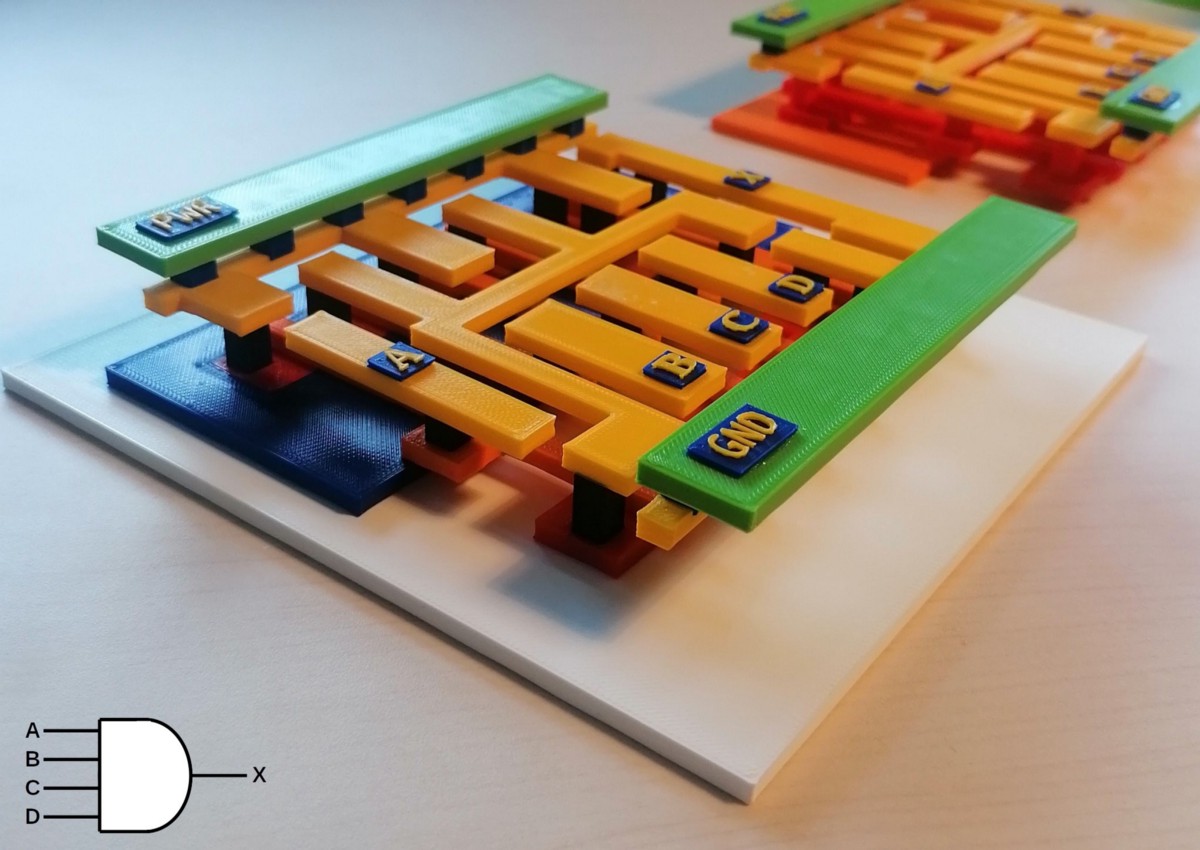
ASICs pack in billions of transistors per square centimeter, making their construction and functionality impossible to understand with the naked eye.
In fact, the upcoming 2 nanometer technology will be so small* that the transistor dimensions will only be 20X larger than an individual atom.
Wouldn’t it be great to see how ASICs are built in 3D at a scale that our bulky human hands can appreciate?
Well wait no longer! Thanks to Thorsten Knoll’s guide, you can now 3D print the cells that make up an ASIC using the GDS files.
Interview with James Stine - Open Source Standard Cells
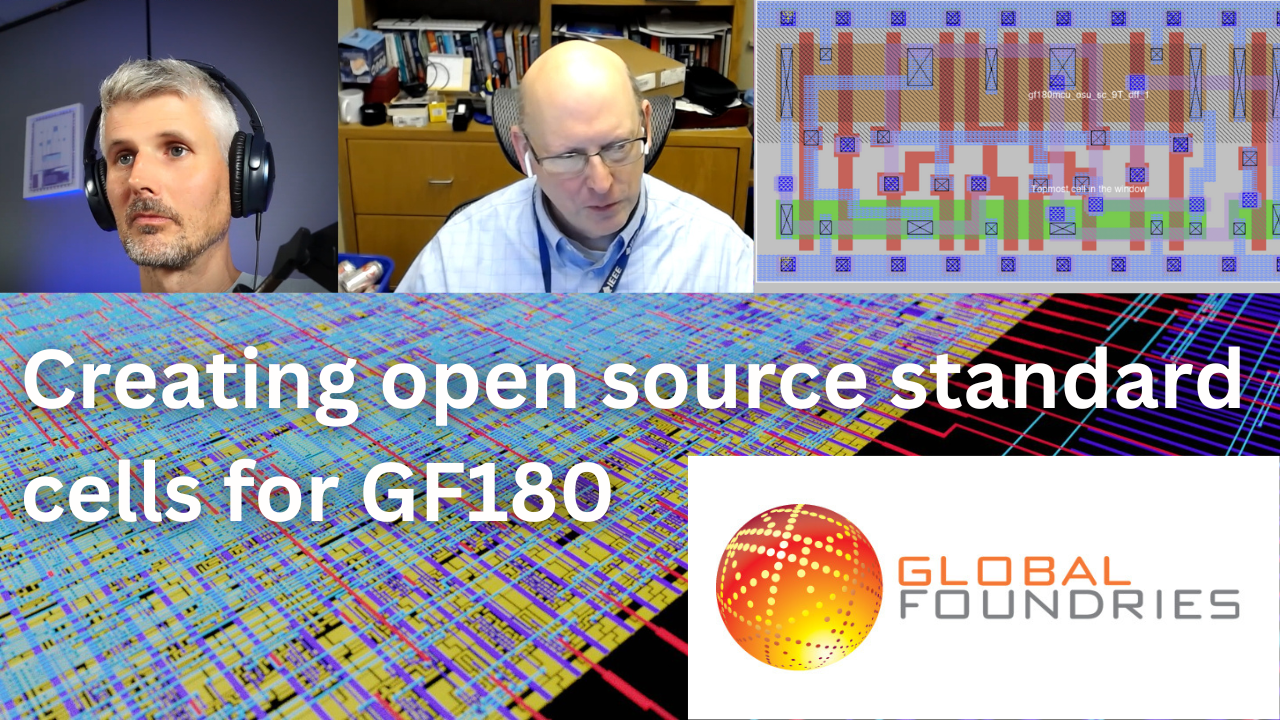
In this interview with Professor James Stine, we talk about:
- Why is Open Source the key to innovation?
- What do students struggle with most when learning to design standard cell libraries?
- What are the biggest misconceptions engineers have about standard cells?
- What’s James’ tool flow?
- How many cells are needed to make a library?
- Why do we need another library for Global Foundries (GF) 180?
- How far are open source tools from commercial tools?
- Could automated layout of standard cells compete with hand layouts in nanometer processes?
- With Moore’s Law slowing down, do any circuit families deserve a second chance?
- Why would nVidia make a 7.5T standard cell library?
Text of the interview is included below.
MPW7 submitted!
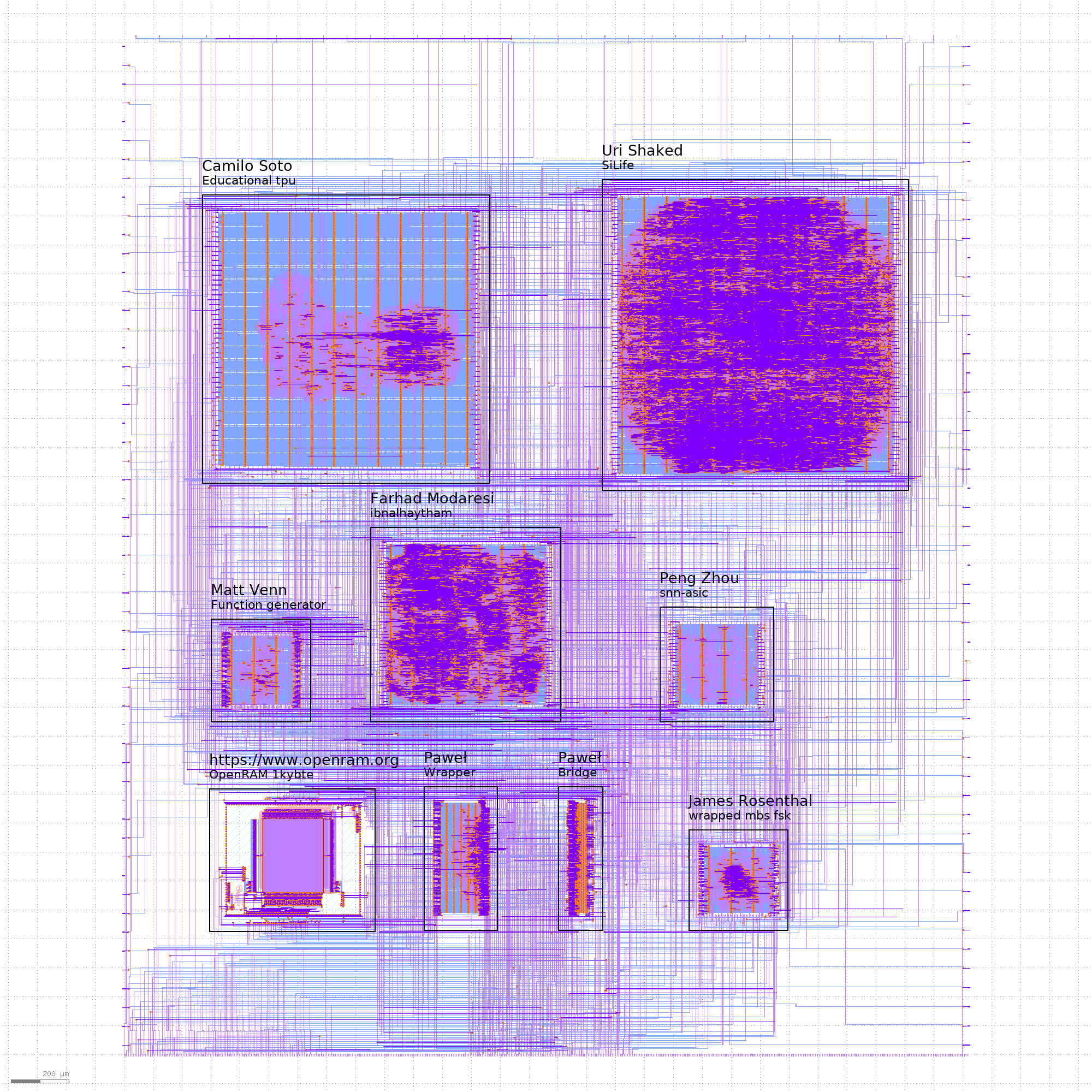
We submitted for MPW7! I am particularly excited about this submission because we were able to submit the Zero to ASIC course designs as well as the first Tiny Tapeout design.
MPW7 has by far had the most submissions of the MPW shuttles so far with 72 submitted projects as of 13 September.
Congratulations to everyone on the course submission! We had 9 projects from the course, with 1 demo arbitrary function generator from me, a 32-bit RISC-V based processor by Farhad, an in silicon version of Conway’s Game of Life from Uri and a Spiking Neural Network (SNN) accelerator by Peng Zhou. We also implemented 1kByte of RAM with open-source OpenRAM.
Instrumenting Hardware Adders
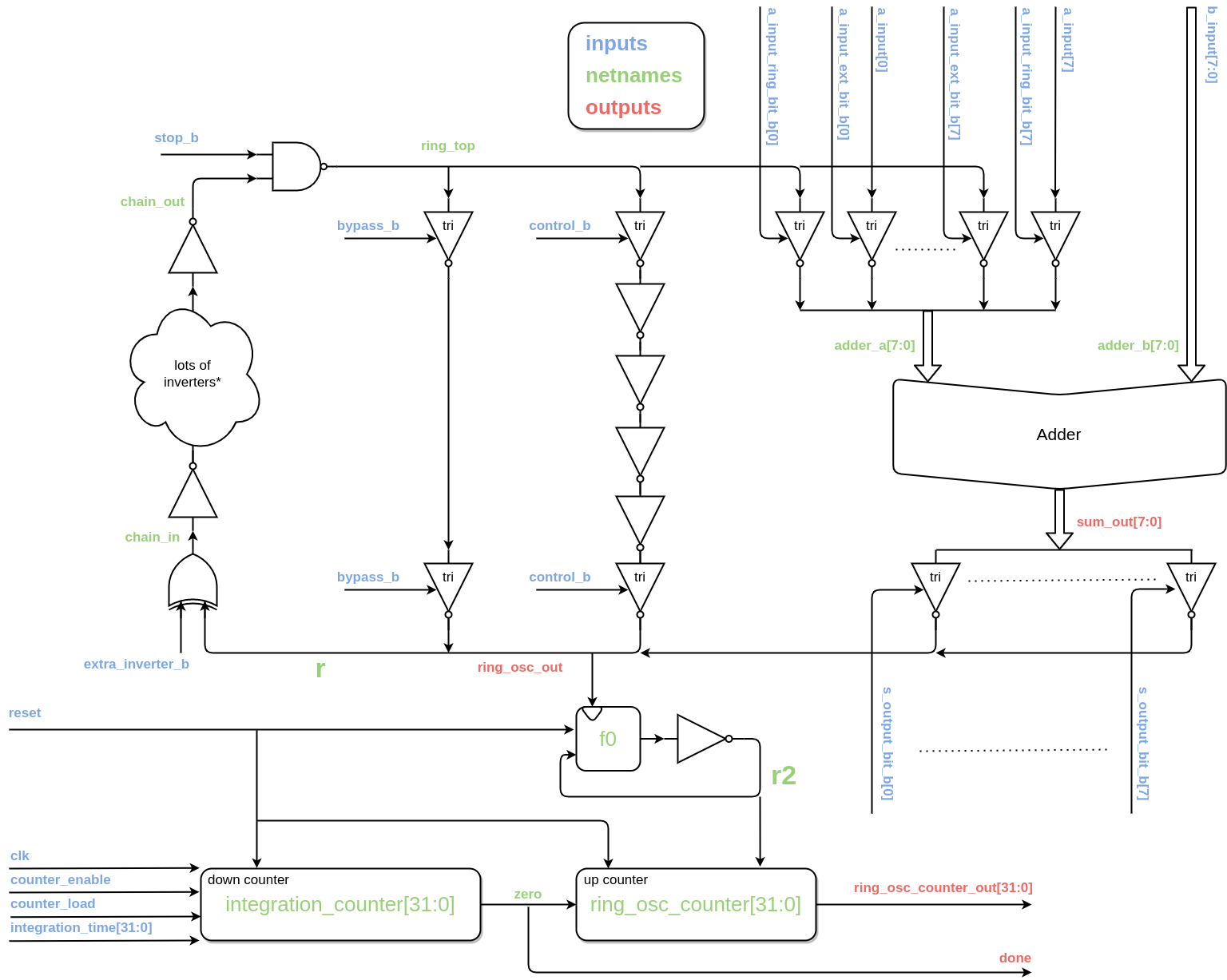
Following my interview with Teo on optimising hardware adders, I thought it would be a great project to tapeout on MPW6.
I wrote about the process on twitter:
I'm working on putting @td_ene 's adder work onto MPW6. Work in progress repo here: https://t.co/OBg8jQG1HJ
It was very easy to generate the adders, but I'm getting stuck on instrumenting them. I need to measure the performance inside the chip to get accurate results. pic.twitter.com/3CJvjmNzGI
MPW6 submitted!
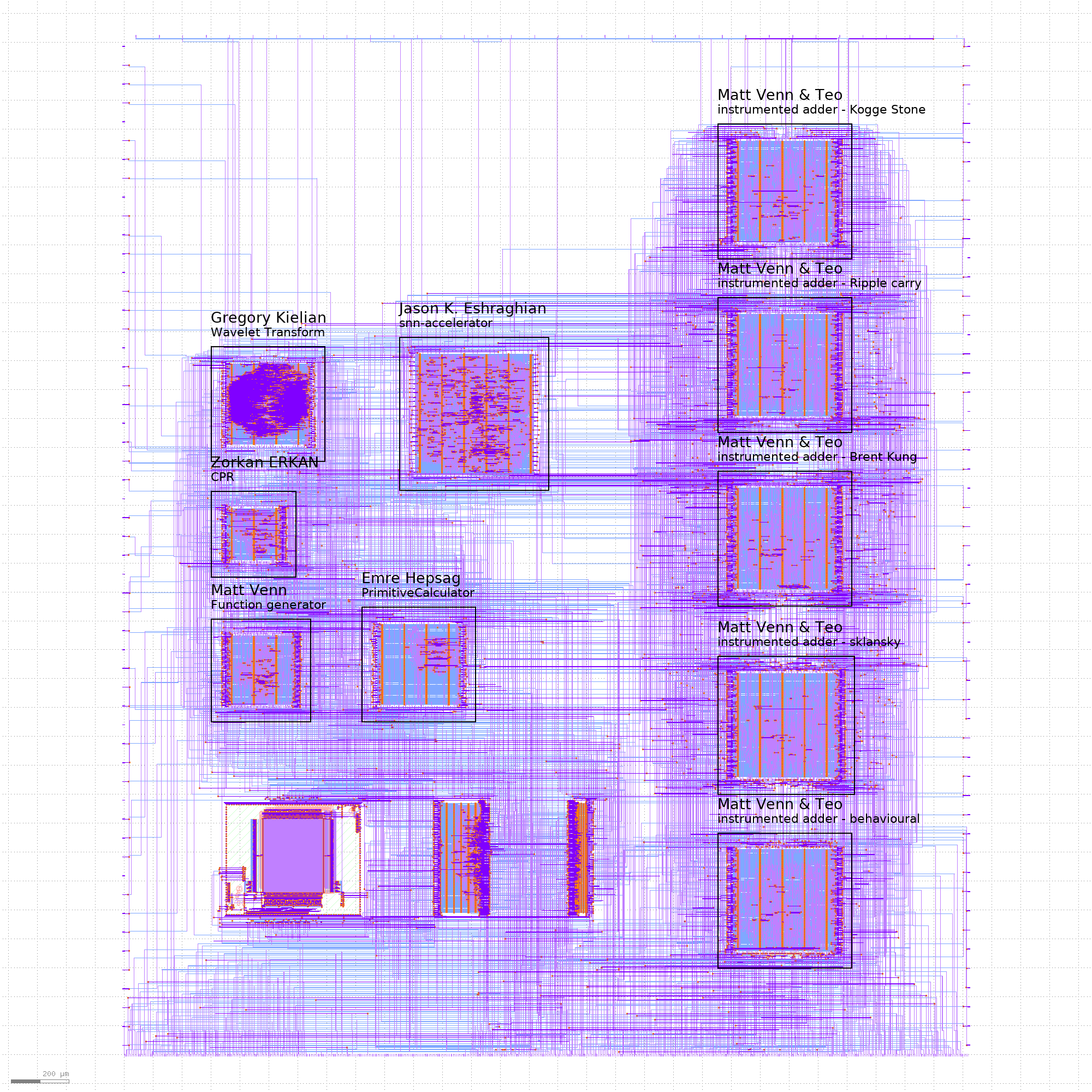
We submitted for MPW6!

We had 4 submissions from the course, the shared SRAM infrastructure, and I did some work on instrumenting Teo’s hardware adders.
Congratulations to:
- Zorkan ERKAN
- Emre Hepsag
- Gregory Kielian
- Jason K. Eshraghian
for getting your first ASIC designs on the submission!
We also had some people from the course make personal applications for a whole chip:
- Shumpei Kawasaki - MARMOT SOC
- Maximo - Hardware implementation of the Hack Computer from the Nand to Tetris courses,
- Proppy - HSV Mixer
Here’s the github repo for the group submission and the Efabless project.
ASIC Development in the Cloud
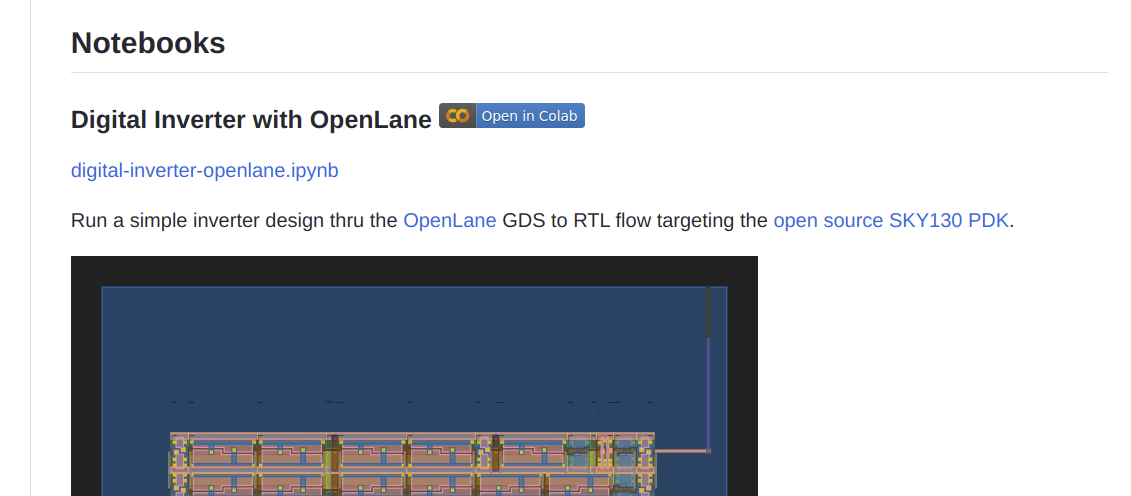
Proppy has been doing some great work with preparing the open source ASIC tools to work inside Jupyter notebooks. This means that you can now experiment with simulation and ASIC hardening without needing to download or configure the tools.
I think this is going to be of great importance for academia and education:
- Now when people publish papers they can include a link to a notebook that reproduces the published results.
- For education, it’s going to be so much easier to do a class workshop without having to install tools or maintain VMs.
Proppy demonstrated and explained his work in this interview.
Interview With Teo
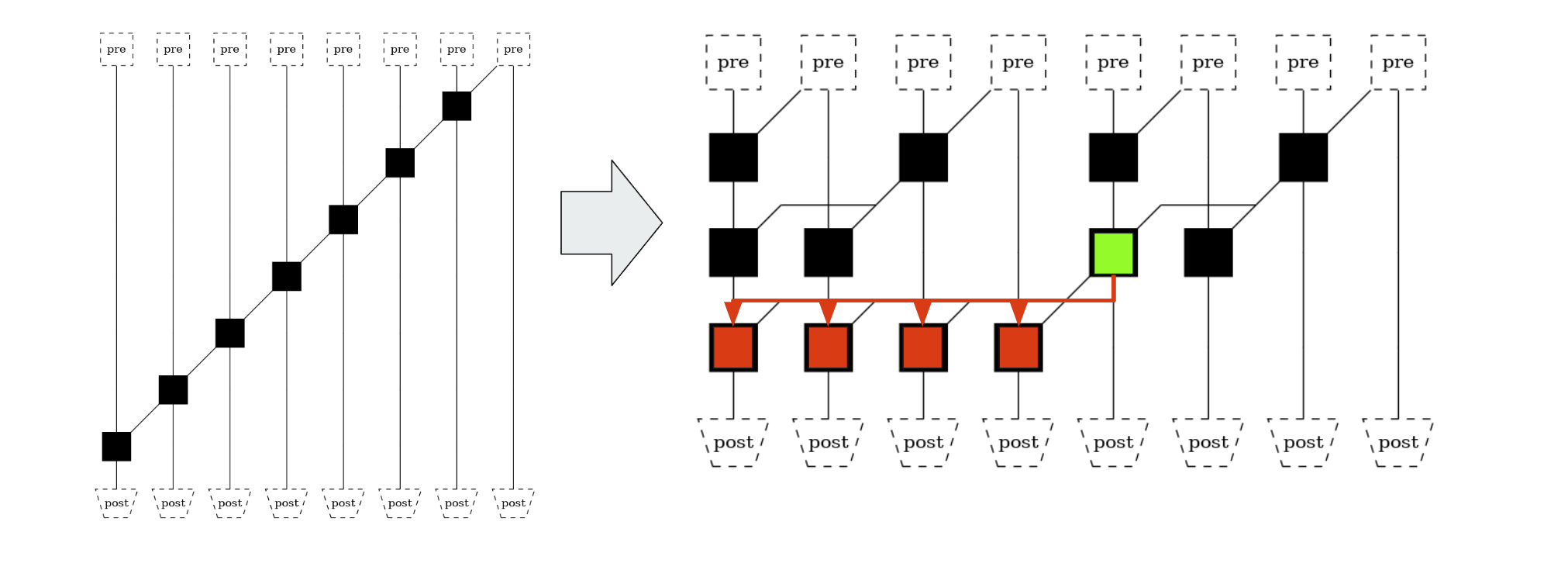
Teodor-Dumitru Ene has been doing some interesting work on optimising hardware adders. Until I spoke with him, I didn’t realise how important this basic digital building block really is. An interesting statistic from his presentation slides:
When a RISC-V processor boots into Linux, 65% to 72% of instructions use addition.
By default, Yosys will synthesise something like this:
reg [31:0] a;
reg [31:0] b;
wire sum = a + b;
Using a ‘middle of the road’ adder, that gives medium PPA (power, performance, area) results. Teo has made a Python library and Yosys plugin that allows us to choose between 4 other types of adder: